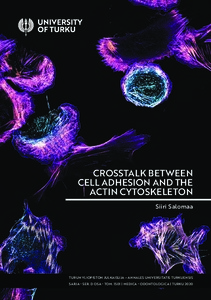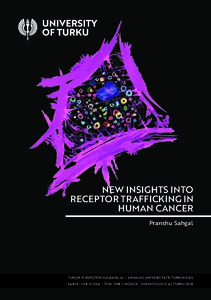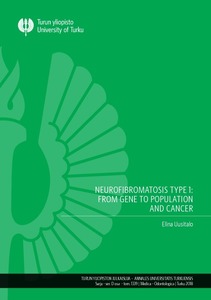Hae
Aineistot 1-10 / 11
Type 2 Diabetes and Bone: The Interactions Between Glucose and Bone-forming Osteoblasts
(Turun yliopisto, 2024-05-31)
Bone is an active tissue that undergoes constant remodelling. Bone-forming osteoblasts use various energy sources to meet their energy demand, and one of the main energy sources of the cells is glucose. Glucose is transferred ...
Biological imaging of challenging targets: Peripheral nerve, mouse bones and cultured osteoclasts
(Turun yliopisto, 2021-05-25)
During this study, advances in bioimaging have affected the biomedical research field. In this thesis, traditional microscopy and selected new techniques, namely microcomputed tomography (µCT), STED microscopy and ...
CD73 in triple-negative breast cancer
(Turun yliopisto, 2023-12-16)
CD73 is a membrane-bound receptor that converts AMP to adenosine. Its overexpression in tumors is associated with poor outcomes in triple-negative breast cancer (TNBC) patients. TNBC patients have limited treatment options ...
Crosstalk between cell adhesion and the actin cytoskeleton
(Turun yliopisto, 2020-09-25)
In order to form tissues and to move, cells need to attach to the surrounding environment. Integrins are the major cell adhesion receptors that cells use to attach to the extracellular matrix on the outside of the cell, ...
New insights into receptor trafficking in human cancer
(Turun yliopisto, 2018-11-16)
Plasma membrane receptors play an essential role in cancer by regulating cancer-related processes such as cell proliferation and migration in response to cues from the extracellular ligands. Integrins are cell-matrix ...
Regulation of Schwann cells and osteoclasts with an emphasis on NF1-deficient cells
(Turun yliopisto, 2019-06-08)
ABSTRACT
Neurofibromatosis type 1 (NF1) is a dominantly inherited cancer predisposition syndrome, which affects one in 2000 individuals worldwide. NF1 exhibits a variety of clinical symptoms. Neurofibromas, the hallmarks ...
Phage-based biosensors for detection of microbes and biomarkers
(Turun yliopisto, 2022-06-22)
The detection of microbial species and communities has always been an area of great importance. Rapid methods for microbial detection are especially important in the medicine, pharmacological, and food industry. The lack ...
Neurofibromatosis type 1: From gene to population and cancer
(Turun yliopisto, 2018-03-23)
Neurofibromatosis type 1 (NF1) is an autosomal dominant syndrome caused by mutations in the large and complex NF1 tumor suppressor gene on chromosome 17. NF1 is the most frequent hereditary tumor predisposition syndrome. ...
Functional and molecular characterization of potential oncogene Sharpin
(Turun yliopisto, 2018-08-31)
Sharpin (SHANK‐Associated RH Domain Interactor) is a multifunctional adaptor protein that interacts with other proteins and regulates their functions. For example, Sharpin is a subunit of the linear ubiquitination assembly ...
Novel insights into filopodia function – A focus on integrin and F-actin regulation
(Turun yliopisto, 2021-10-08)
Filopodia are actin-rich cell protrusions that are extended from the plasma membrane by different cell types in order to sense the surrounding environment. In cancer cells, the emergence of filopodia supports metastasis, ...









